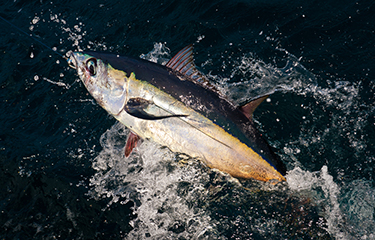Pacific bigeye, yellowfin, albacore, and skipjack tuna are all reported to be in healthy condition, according to a 2018 stock assessment announced this week during the 16th Western and Central Pacific Fisheries Commission (WCPFC) meeting in Port Moresby, Papua New Guinea.
The Pacific Community’s (SPC) stock assessment report stated that the estimate of the total tuna catch in the WCPFC Convention Area for 2018 is 2,790,859 metric tons (MT), which represents 81 percent of the total Pacific Ocean catch of 3,443,174 MT, and 54 percent of the global tuna catch, which was 5,172,543 MT.
According to SPC’s overview of the tuna fisheries paper, the total estimated value of the tuna catch in the convention area increased by 1 percent to USD 6.01 billion (EUR 5.47 billion) in 2018.
The value of the purse seine catch is USD 3.26 billion (EUR 2.9 billion), accounting for 54 percent of the total value of the tuna catch. The value of the longline fishery increased 16 percent to USD 1.72 billion (EUR 1.5 billion) accounting for 29 percent of the total value of the tuna catch.
WCPFC Executive Director Feleti Teo said, in his opening statement at the meeting on 5 December, that the region has high tuna production levels. He said the region’s key commercial tuna stocks of bigeye, skipjack, albacore, and yellowfin were “assessed to have been managed and maintained above agreed sustainable levels.”
Teo added that compared to other ocean regions, the tuna stocks in the region is not overfished.
Graham Pilling, director of the Oceanic Fisheries Program at the Pacific Community, added in a press release that conservation measures have contributed to the sustainability of the Pacific tuna stock.
“Healthy status of WCPO tuna stocks is attributed to the management of the fishery through the WCPFC process and its members, including the key roles played by the Pacific island member-countries and sub-regional fisheries agencies including the Fisheries Forum Agency [FFA] and the Parties to the Nauru Agreement [PNA],” Pilling said.
Despite the positive assessment, Teo said that the tuna commission should continue with its collective conservation efforts and not “to be complacent and to be less vigilant.”
But the Pacific community also pointed out that there are still challenges that need to be addressed by the commission, such as the state of certain Western Central Pacific Ocean billfish and shark stocks, which it said are in need of urgent attention.
Economic impacts resulting from the recent decline in the price of skipjack tuna also poses a challenge in the region. The skipjack prices, which has fallen below USD 1,000 (EUR 900) per MT for the first time in a number of years.
But the WCPFC is developing and implementing harvest strategies for key tuna stocks to address the challenges, WCPFC Chair Jung-re Riley Kim said.
“I am very grateful to SPC for their significant contribution to providing science and data inputs into the important harvest strategy work of the commission, and their innovative efforts and initiatives to engage with cooperating members, cooperating non-members and participating territories, and contribute to building their capacity in terms of harvest strategy,” Kim said in a release.
Photo courtesy of David Vogt/Shutterstock







